
Fundamentals
Overnight care, at its core, represents a deliberate act of profound respect and restorative tending for hair during the nocturnal hours. It is an acknowledgment that the stillness of night, often associated with rest and renewal, provides a unique canvas for deep nourishment and safeguarding. This approach involves a constellation of practices designed to shield the hair from the rigors of friction, moisture loss, and mechanical stress that might otherwise occur during sleep. For textured hair, this nocturnal attention carries particular significance, stemming from the unique structural characteristics of the hair fiber itself.
The very definition of overnight care extends beyond simple application of a product; it is a holistic regimen that embraces strategic protective measures. Imagine the delicate architecture of a strand of textured hair ❉ its natural curvature, its varied diameter along its length, its tendency to absorb and release moisture differently from straight hair types. These inherent qualities render it more susceptible to tangling, breakage, and dryness when exposed to abrasive surfaces or dry air for extended periods.
The wisdom embedded in ancestral care rituals understood this vulnerability intuitively, long before the advent of scientific instruments could dissect the cuticle layer or measure transepidermal water loss. The meaning of this care, therefore, becomes a quiet commitment to preserving the vitality and integrity of each coil, curl, or wave as individuals slumber.
From the very first observations of seasoned hair tenders, it became clear that the prolonged contact with pillowcases, blankets, or even the subtle movements of the head during sleep could lead to a gradual attrition of the hair’s outer protective layers. This continuous friction abrades the cuticle, that delicate shingle-like exterior which guards the hair’s inner cortex. A compromised cuticle allows precious internal moisture to escape, leaving the hair brittle and prone to further damage. Overnight care serves as a countermeasure, a protective cocoon that minimizes this abrasive interaction, allowing the hair to retain its hydration and smoothness, thereby preserving its natural elasticity and vibrancy.
Overnight care is a conscious regimen of protecting and nourishing hair through the night, a practice especially vital for textured strands vulnerable to dryness and friction, rooted in an intuitive understanding of hair’s delicate nature.

Elemental Pillars of Nocturnal Preservation
The fundamental components of overnight care, while seemingly simple, embody centuries of collective knowledge refined through observation and shared experience. These elements address the immediate needs of textured hair, providing a barrier against damage and fostering an environment conducive to restoration.
- Protective Wraps and Coverings ❉ The use of soft, smooth materials to enclose the hair stands as a cornerstone. Fabrics such as satin or silk, with their low friction coefficients, significantly reduce the mechanical abrasion caused by movement against conventional cotton pillowcases. This practice creates a gentle barrier, allowing the hair’s cuticle to remain undisturbed and its moisture sealed within.
- Nourishing Oils and Butters ❉ The application of natural emollients before sleep provides a sustained dose of hydration and fatty acids. These botanical treasures, often passed down through generations, function as occlusives, forming a protective layer that slows the evaporation of water from the hair shaft. They also impart a supple softness, enhancing the hair’s flexibility and reducing the likelihood of breakage upon waking.
- Strategic Styling ❉ Gathering the hair into loose braids, twists, or pineapple buns before sleep is a protective measure that minimizes tangling and keeps the hair contained. These styles prevent individual strands from rubbing against each other or external surfaces, preserving the definition of curls and reducing the formation of knots. This simple yet profound strategy also assists in maintaining the integrity of previous styling efforts.
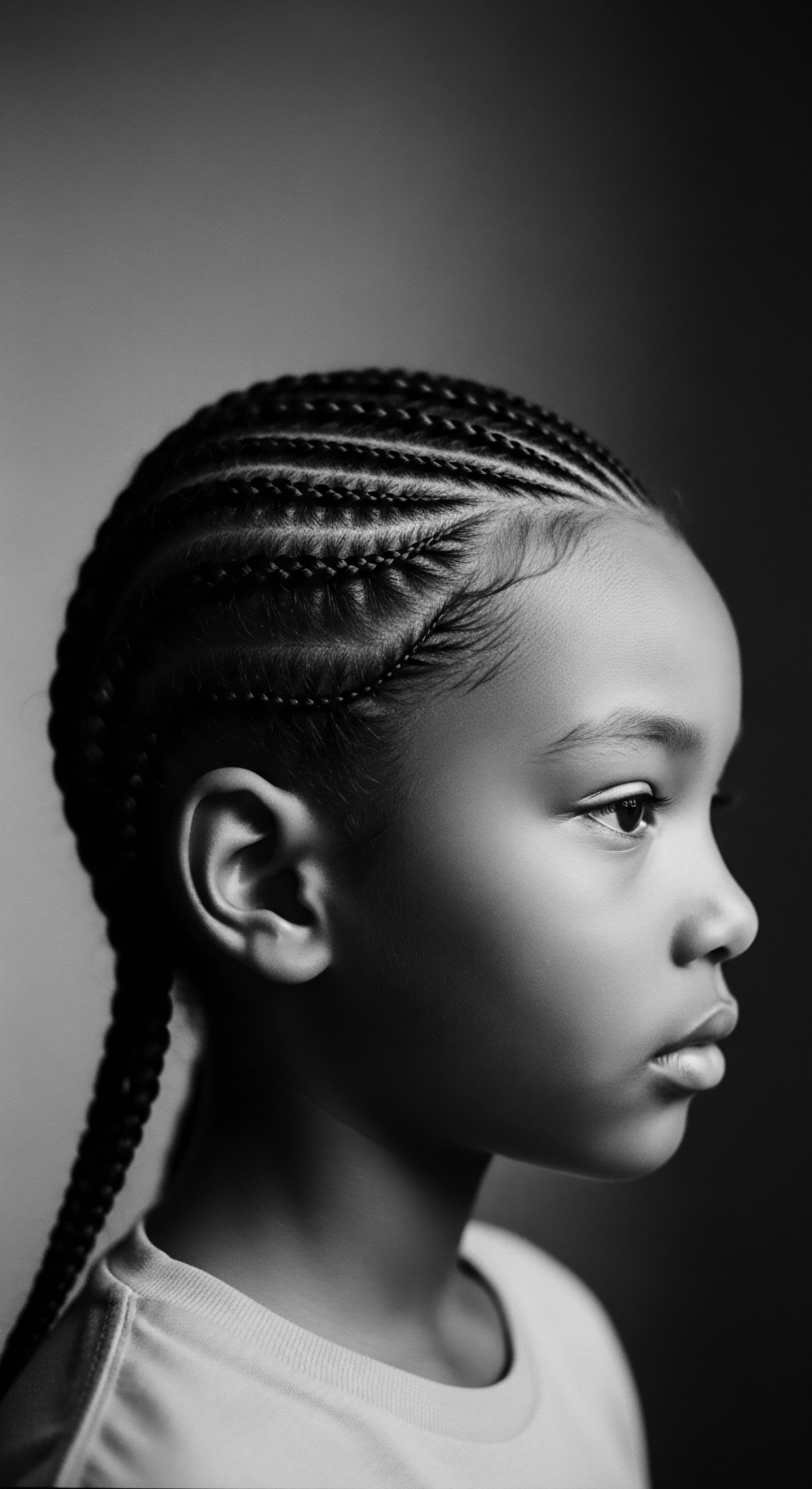
The Ancestral Whispers in Gentle Practices
The concept of overnight care is hardly a modern invention. Its roots stretch back into the deepest wells of ancestral wisdom, where hair was revered as a sacred connection to identity, lineage, and spiritual power. Long before laboratories isolated amino acids or defined lipid barriers, communities across the African continent and throughout the diaspora understood the profound need to tend to hair with diligence, particularly during periods of rest. The quiet hours of night were seen not only as a time for human slumber but also as a window for the hair to mend and absorb the goodness applied to it.
Early practices might have involved wrapping hair in soft cloths, perhaps made from locally available fibers, or securing it with natural cords. Plant-derived oils, extracted from shea nuts, palm kernels, or various seeds, were routinely applied, not just for their moisturizing properties but often for their perceived medicinal or spiritual benefits. These traditions underscore a profound connection to the natural world and a keen understanding of hair’s needs, passed down through generations of communal care. The careful preparation of hair for sleep was a ritual, a silent conversation between past and present, a commitment to preserving the legacy held within each strand.

Intermediate
Stepping beyond the fundamental mechanics, an intermediate appreciation of overnight care reveals its intricate dance with the biophysics of textured hair. This deeper interpretation illuminates how nocturnal practices serve as a continuous restorative process, working synergistically with the hair’s natural inclinations and sensitivities. The significance of this care extends to how it fundamentally alters the nightly environment surrounding the hair, transforming a potential source of damage into a period of intensive repair and fortification.
The inherent structure of textured hair, characterized by its elliptical cross-section and numerous bends along the shaft, means it is more prone to dryness compared to straight hair. The cuticle layers, while present, often lift at the curves, making it easier for moisture to escape. During sleep, as individuals shift and turn, the hair rubs against bedding, generating friction.
This friction, when prolonged, acts as a microscopic sandpaper, further lifting and abrading those already vulnerable cuticles. An understanding of overnight care recognizes this ongoing challenge, positing solutions that actively mitigate these daily assaults.
Overnight care for textured hair moves beyond simple protection to a nuanced understanding of its biophysical needs, actively countering daily damage and fostering an environment of continuous repair and fortification during sleep.

The Biomechanical Shield of Nightly Protocols
The meticulous attention paid to hair during the night becomes a crucial biomechanical shield. This is not merely about preventing tangles; it represents a sophisticated strategy to preserve the hair’s physical integrity and optimal moisture balance.
- Mitigation of Frictional Damage ❉ The primary objective of overnight coverings (bonnets, wraps) and smooth pillowcases (satin, silk) is to reduce the coefficient of friction. Cotton, a common bedding material, possesses a rougher surface at a microscopic level, causing hair strands to snag and abrade. The smoother fibers of satin or silk allow hair to glide, significantly minimizing cuticle lifting and breakage. This protective layer ensures that the precious outermost part of the hair remains intact, thereby maintaining its natural luster and strength.
- Preservation of Moisture Equilibrium ❉ Textured hair has a greater surface area relative to its volume, which contributes to higher rates of transepidermal water loss (TEWL) from the scalp and transepidermal moisture loss from the hair shaft itself. Dry indoor air, particularly during cooler months or with air conditioning, exacerbates this. The enclosed environment created by a bonnet or wrap, along with the application of humectant-rich products or occlusive oils, creates a microclimate around the hair. This reduces the evaporative pull, allowing the hair to retain internal moisture and absorb external emollients more effectively, thus supporting its hydro-lipid balance.
- Reduction of Mechanical Stress and Strain ❉ Twisting, braiding, or loosely pinning the hair before sleep organizes the strands into larger, more cohesive units. This organizational approach prevents individual hairs from becoming intertwined and stretched in various directions, which can lead to breakage at points of tension. By minimizing random movement and maintaining a collected state, the mechanical stress on the hair follicle and shaft is considerably lessened, contributing to length retention and overall hair health.
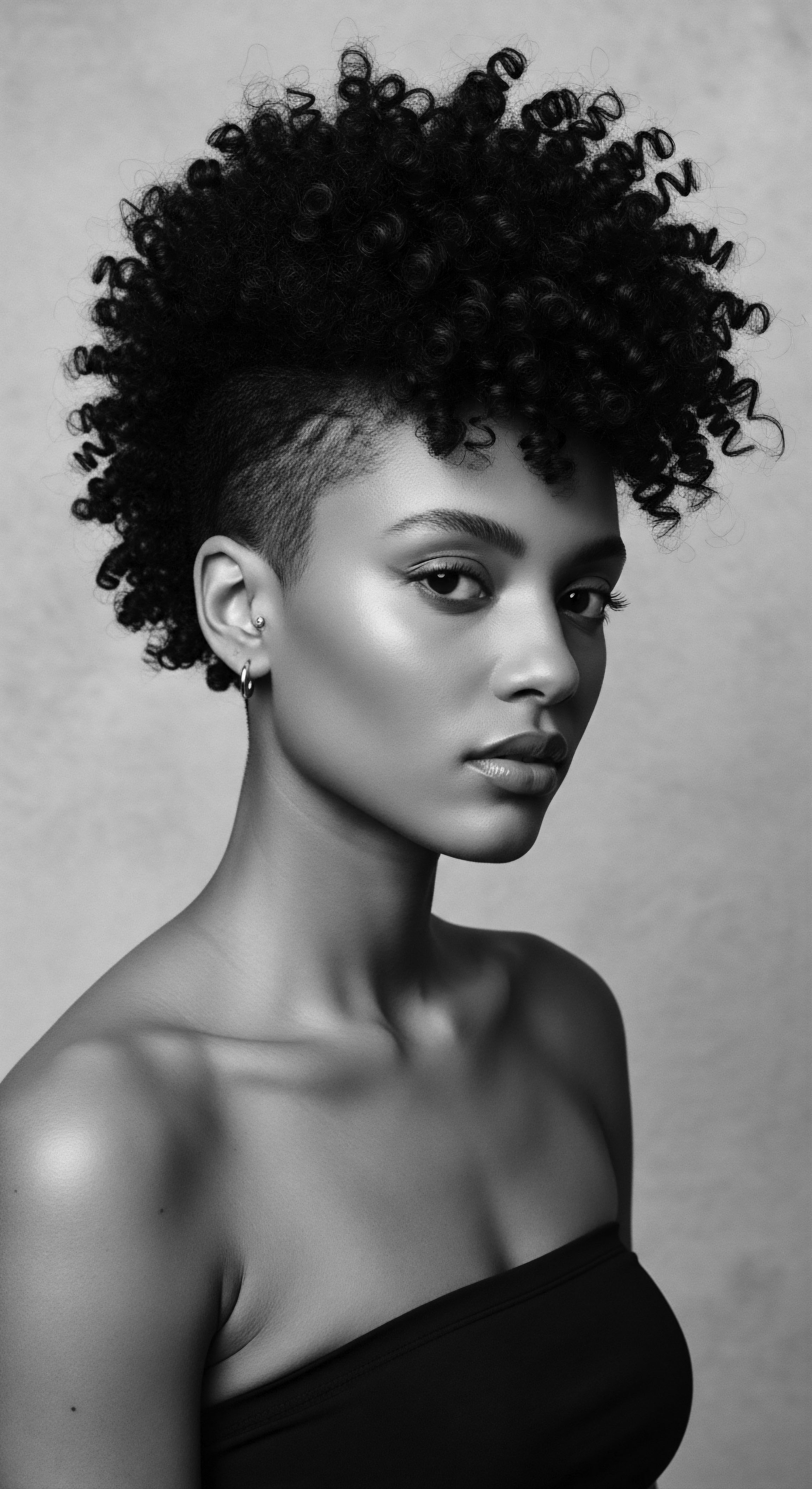
Living Threads ❉ Ancestral Practices and Modern Interpretations
The lineage of overnight hair care stretches back through generations, deeply embedded in the cultural practices of Black and mixed-race communities. These traditions were not simply about aesthetics; they represented a profound understanding of hair as a living entity, a conduit of identity and a repository of history. The methods employed were often ingenious, born from necessity and a deep connection to available natural resources.
Consider the historical prevalence of head wraps throughout the African diaspora. While often serving as markers of status, marital status, or religious affiliation, these coverings also functioned as highly effective overnight protectors. Women would carefully wrap their hair, sometimes already saturated with plant oils or water, in layers of cloth. This practical function was intertwined with cultural significance, embodying care, modesty, and communal identity.
In many West African societies, for example, the use of shea butter (derived from the karité tree) and various seed oils (like baobab oil) was commonplace. These oils, rich in fatty acids and vitamins, were applied not just during the day but often as a pre-sleep ritual. Their application was often accompanied by gentle massage of the scalp, stimulating circulation and encouraging a healthy environment for hair growth. This ritualistic application, performed at night, allowed the oils to penetrate deeply into the hair shaft and scalp over extended periods, a natural ‘deep conditioning’ that predates modern hair product terminology.
| Historical Practices (Ancestral Roots) Wrapping hair in natural cotton or silk cloths (e.g. specific regional headwraps for sleep). |
| Modern Interpretations (Contemporary Care) Wearing purpose-designed satin or silk bonnets, scarves, or using silk pillowcases. |
| Historical Practices (Ancestral Roots) Applying plant-derived oils and butters (shea butter, palm oil) often mixed with herbs. |
| Modern Interpretations (Contemporary Care) Utilizing formulated hair oils, leave-in conditioners, and overnight masks with targeted ingredients. |
| Historical Practices (Ancestral Roots) Creating loose braids or twists, sometimes secured with simple cords or hairpins made from natural materials. |
| Modern Interpretations (Contemporary Care) Implementing low-tension protective styles like loose twists, braids, or 'pineapple' buns, secured with soft scrunchies. |
| Historical Practices (Ancestral Roots) The enduring objective remains hair preservation and nourishment, whether through time-honored customs or innovative product science. |
The cultural significance of these practices cannot be overstated. They were often intergenerational acts of care, with mothers and grandmothers teaching younger generations the intricate dance of cleansing, oiling, and protecting their hair before slumber. These were moments of quiet connection, of passing down not just techniques but also a profound reverence for hair as a manifestation of self and heritage.
The very act of preparing hair for the night was a testament to its value, an acknowledgment of its need for gentle, sustained attention. This continuity of care, from ancient homesteads to contemporary bedrooms, speaks to the timeless universality of hair needs and the enduring ingenuity of those who have tended to it.
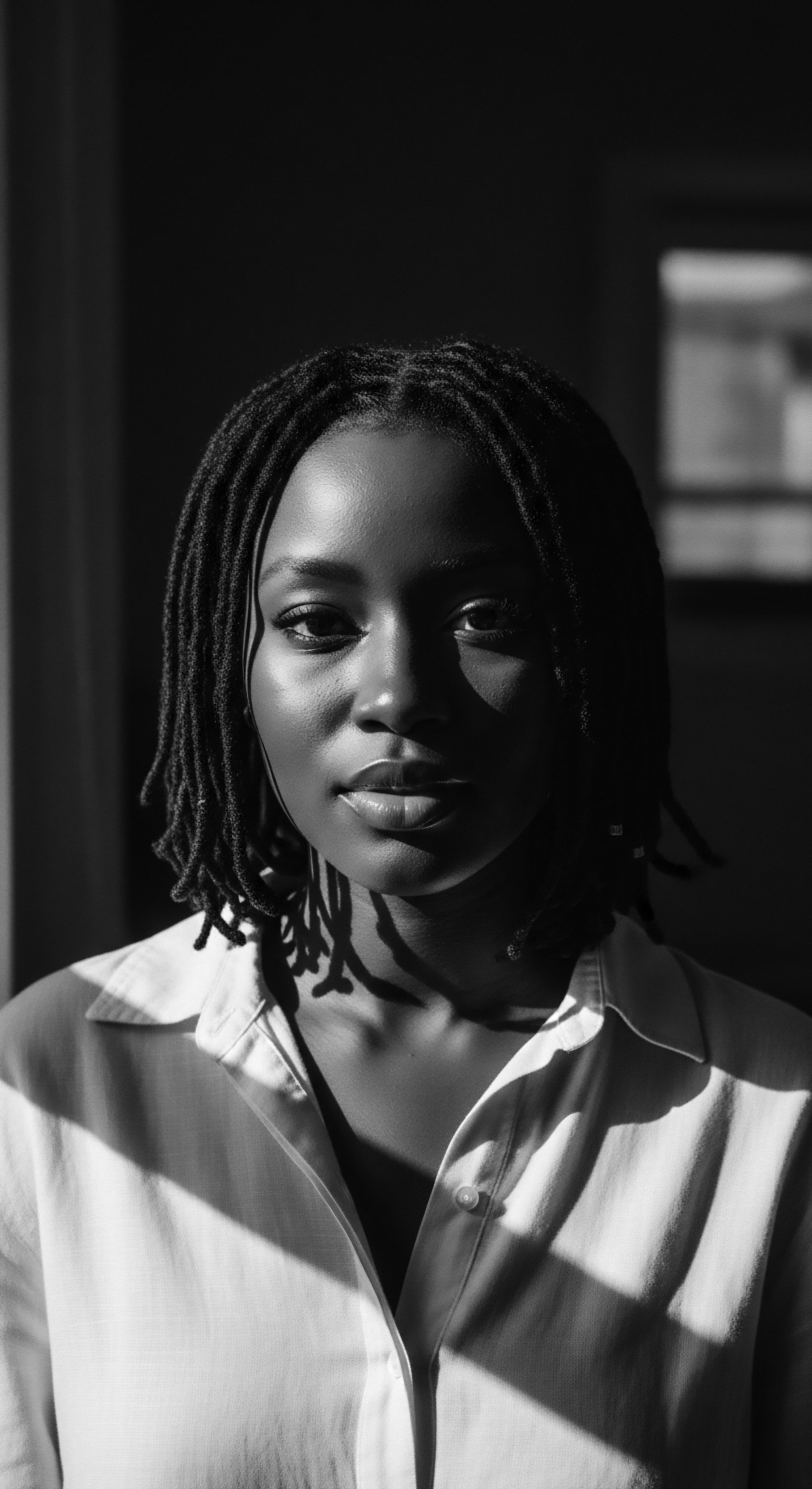
Academic
The academic interpretation of Overnight Care positions it as a sophisticated, strategic prophylactic and restorative regimen integral to the phenology of textured hair, particularly within its diverse ethnocultural contexts. This understanding transcends anecdotal observation, delving into the biophysical, biochemical, and psychosocial dimensions that underscore its profound significance. Overnight care, at this level of inquiry, is not merely a collection of rituals; it is a meticulously evolved system of environmental control and targeted nutrient delivery, designed to counteract specific vulnerabilities inherent in hair of high curl density and to preserve the intricate symbolic capital embedded within such hair. Its meaning extends to its role as a persistent, historically adaptive mechanism for maintaining trichological health and cultural continuity.
From a dermatological and trichological standpoint, the nocturnal period presents a unique set of challenges and opportunities for hair health. The extended contact of hair with sleep surfaces, typically cotton, creates sustained mechanical abrasion that can disrupt the cuticle layer, compromise the integrity of the hair shaft, and accelerate transepidermal water loss (TEWL) from the scalp. Textured hair, with its naturally higher porosity and susceptibility to tangling due to its helical structure, is particularly vulnerable to these stressors.
Overnight care, through its core components—protective coverings, emollients, and low-tension styling—acts as a critical intervention. It minimizes frictional forces, creates a microclimate conducive to moisture retention, and reduces mechanical stress, thereby optimizing the conditions for cellular repair and preventing cumulative damage that could otherwise lead to dryness, breakage, and reduced length retention.
Academically, Overnight Care is a strategic prophylactic and restorative regimen, vital for textured hair’s biophysical health and cultural meaning, mitigating environmental stressors and preserving symbolic capital.
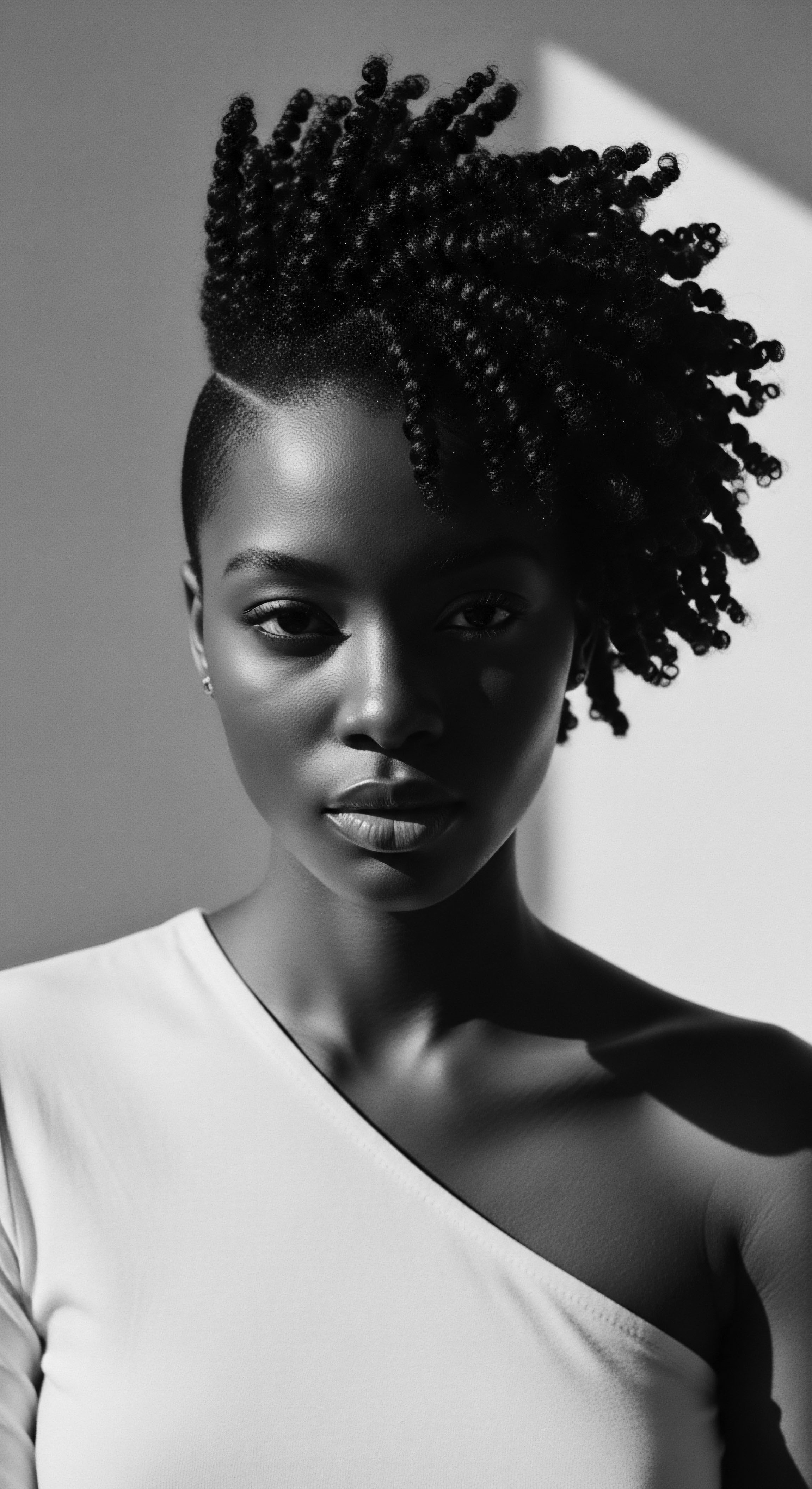
Biophysical and Biochemical Underpinnings of Nocturnal Hair Preservation
The efficacy of overnight care protocols can be rigorously examined through the lens of hair science, revealing a complex interplay of physical and chemical principles that validate long-standing traditional practices.
A primary concern for textured hair is its predisposition to dryness. The coiled and curled structures of these hair types lead to an uneven distribution of natural sebum down the hair shaft, leaving distal ends particularly vulnerable to dehydration. During sleep, ambient air, especially in conditioned or heated environments, draws moisture from the hair. Protective coverings, such as those made from silk or satin, create a localized humid microenvironment around the hair.
This effectively reduces the vapor pressure gradient between the hair shaft and the surrounding air, significantly decreasing the rate of evaporative water loss. Furthermore, the application of lipid-rich emollients—like those found in various natural oils and butters—forms an occlusive barrier on the hair surface, further impeding moisture egress and allowing for deeper penetration of conditioning agents over the extended hours of rest. This dual action supports the maintenance of optimal hydration levels, crucial for hair elasticity and pliability.
Beyond moisture, the mechanical stress exerted on hair during sleep is a significant factor in hair fiber degradation. The average individual shifts positions multiple times during the night, leading to repeated friction between hair and bedding materials. Microscopically, this abrasion causes the hair’s cuticle scales to lift, chip, and eventually erode, exposing the more fragile cortex. This damage weakens the hair strand, making it prone to splits, frizz, and breakage.
Fabrics like cotton, with their rough, absorbent fibers, exacerbate this issue. In contrast, the smooth, tightly woven fibers of silk or satin allow hair to glide effortlessly, drastically reducing frictional wear. This preservation of cuticle integrity is paramount, as an intact cuticle is the hair’s primary defense against environmental aggressors and internal moisture loss.
The choice of nocturnal styling also plays a crucial role in managing mechanical stress. Loose braids, twists, or ‘pineapple’ buns gather individual hair strands into larger, more resilient units. This prevents individual hairs from tangling and pulling against each other or getting caught and stretched by external forces.
By minimizing localized tension points and distributing stress evenly, these styles contribute directly to length retention by preventing breakage at the mid-shaft or near the scalp. This thoughtful approach to styling is a biomechanical strategy, optimizing the hair’s tensile strength and reducing daily wear and tear.

Cultural Ethnography and Psychosocial Dimensions
The study of Overnight Care within the context of textured hair cannot be divorced from its profound cultural and psychosocial implications. These practices are not mere utilitarian acts; they are deeply ingrained rituals that reflect ancestral knowledge, reinforce collective identity, and serve as forms of self-care and cultural preservation.
Historically, throughout the African diaspora, hair has served as a powerful signifier of identity, status, spirituality, and resistance. The meticulous care of hair, including nightly rituals, was often passed down through matriarchal lines, embodying intergenerational knowledge and community cohesion. For example, historical accounts and anthropological studies of hair practices among various West African ethnic groups reveal a pervasive emphasis on protective styling and nightly preparations.
The use of specific natural emollients like shea butter or palm kernel oil, often applied before bedtime, was documented not only for their nourishing properties but also for their symbolic significance in rituals associated with health, beauty, and spiritual well-being (Byrne, 2008). These practices underscored a deep understanding of hair as a living extension of self, requiring consistent, gentle tending.
Consider the practice of hair braiding and wrapping for sleep among enslaved and later freed Black women in the Americas. In environments hostile to Black bodies and identities, the care of hair, particularly at night, became an act of quiet defiance and self-preservation. It was a means to maintain health, dignity, and a connection to ancestral aesthetics amidst dehumanizing conditions. The nightly routine of braiding or twisting hair and then covering it with a cloth, though born of practical necessity to preserve delicate styles and prevent damage, simultaneously served as a private ritual of reclamation.
It was a moment of intimate self-connection, a quiet assertion of agency over one’s own body and heritage (White & White, 1995). This collective experience contributed to the persistent cultural memory and transmission of overnight hair care as a fundamental practice.
Furthermore, the psychosocial impact of consistent overnight care extends to self-perception and mental well-being. For individuals with textured hair, particularly those navigating societal beauty standards that have historically marginalized natural hair, the visible health and manageability derived from consistent care contribute significantly to self-esteem and confidence. The routine itself becomes a comforting anchor, a consistent investment in self that promotes a sense of agency and empowerment.
The physical act of nurturing one’s hair before sleep can be a meditative experience, fostering a deeper appreciation for the hair’s natural beauty and resilience. This deliberate cultivation of hair health reinforces positive self-image and strengthens the connection to a rich cultural heritage, acting as a quiet but potent form of affirmation.
The academic study of Overnight Care, therefore, encapsulates a rich convergence of biophysical science, ethnobotanical wisdom, and social psychology. It validates traditional knowledge through modern scientific understanding, revealing that the ancestral practices were not accidental but rather highly effective, culturally significant strategies for maintaining the vitality and symbolic power of textured hair across generations. This nuanced interpretation positions Overnight Care as a cornerstone of textured hair health and a living testament to enduring human ingenuity and cultural resilience.
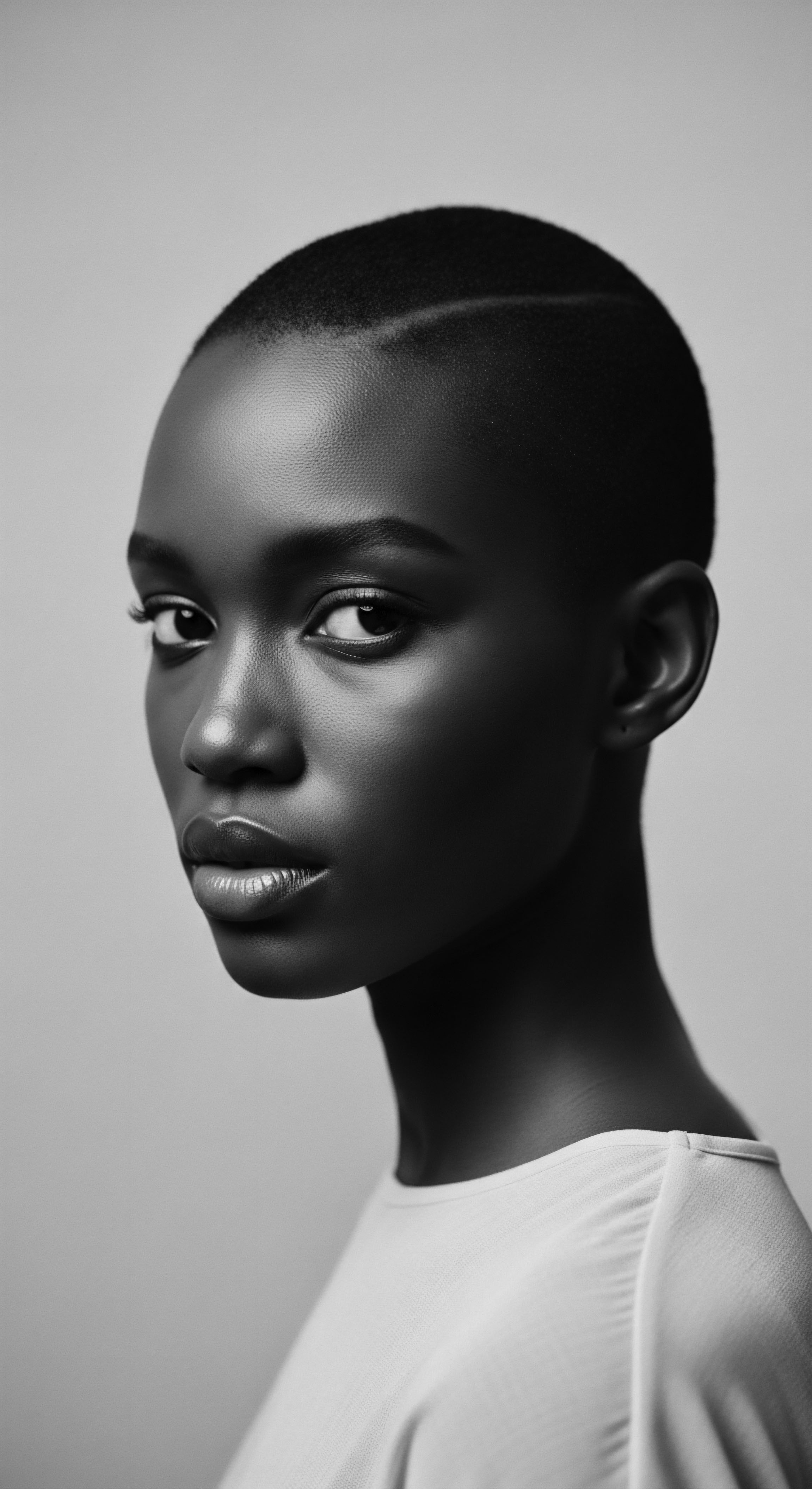
Reflection on the Heritage of Overnight Care
In contemplating the vast landscape of textured hair care, the profound meaning of overnight care emerges as a resilient thread, weaving through the fabric of history, culture, and individual lives. It is more than a mere step in a routine; it is a whispered conversation with ancestors, a testament to enduring wisdom, and a deliberate act of self-reverence. From the intuitive coverings of distant lands to the scientifically validated materials of our present day, the core principle remains an unbroken lineage of care ❉ the gentle protection and deep nourishment of hair through the silence of the night.
The journey of overnight care, from its elemental biological necessity to its sophisticated psychosocial significance, mirrors the intricate journey of textured hair itself. Each coil, each curl, each wave carries not just biological information but also the echoes of countless hands that have tended to it, the resilience of generations who have worn it with pride, and the stories of identities expressed through its intricate patterns. Overnight care is a continuous reaffirmation of hair’s inherent worth, a daily commitment to preserving its vitality and honoring its ancestral memory. It is a quiet revolution, enacted each night, where the wisdom of the past seamlessly informs the well-being of the present, shaping a future where textured hair is universally celebrated in its full glory.

References
- Byrne, T. (2008). Hair in African Art and Culture. Museum for African Art.
- White, S. & White, J. (1995). Stylin’ Thru the Ages ❉ African American Hair Care & Culture. Crown Publishers.
- Robbins, C. R. (2012). Chemical and Physical Behavior of Human Hair. Springer.
- Gavazzoni Dias, M. F. (2015). Hair Cosmetics ❉ An Overview. International Journal of Trichology, 7(1), 2-15.
- Goldsberry, C. (2020). Hair Care Chemistry for the Professional ❉ A Scientific Approach to Hair Care and Formulation. Allured Publishing.
- Burgess, C. (2017). African-American Hair and Its Health. Oxford University Press.
- Ledesma, D. (2014). Hair ❉ A Cultural History. Bloomsbury Academic.
